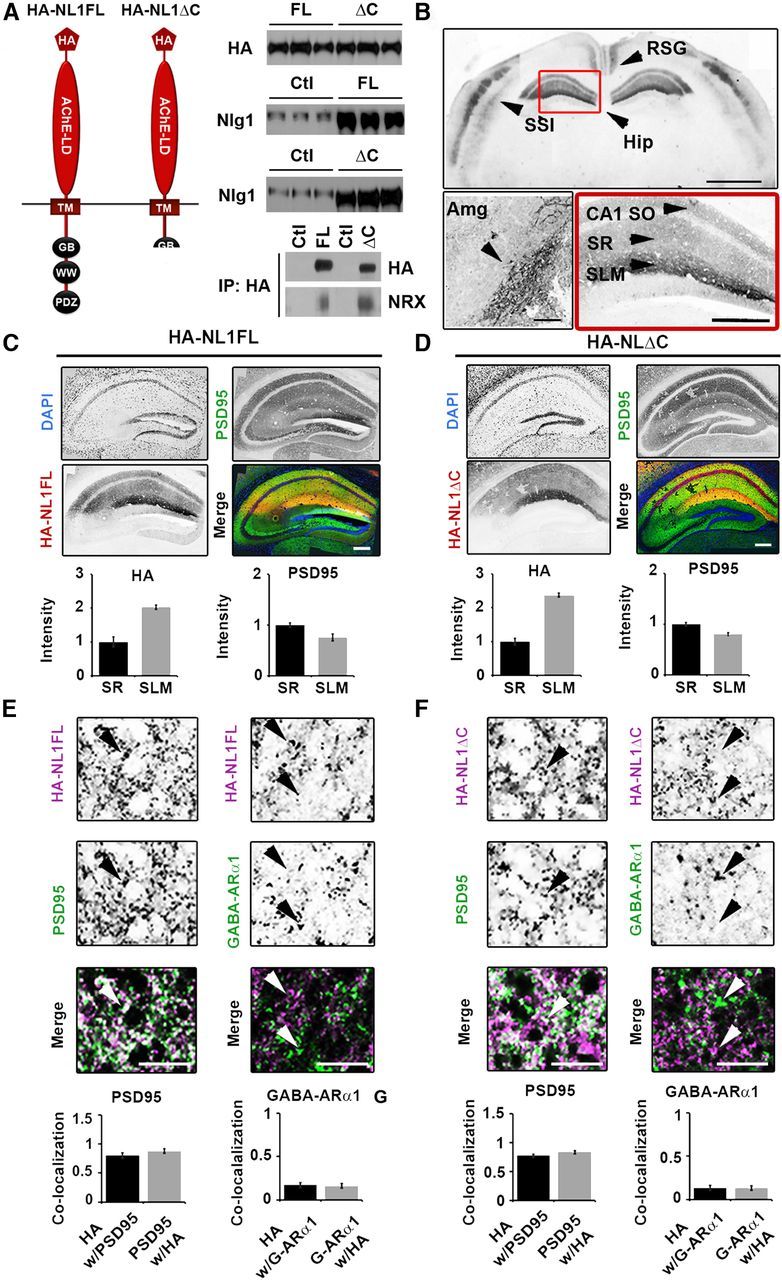Figure 1.

Expression of HA-NL1FL and HA-NL1ΔC in transgenic mice. A, Left, Schematic of the protein structure of HA-NL1FL and HA-NL1ΔC encoded by the constructs that were used to generate transgenic mice. Right, Absolute levels of HA compared between HA-NL1FL mice and HA-NL1ΔC mice (top), NL1 levels compared between transgenics and their controls (middle). Five micrograms of total protein loaded into each lane. Immunoprecipitation (IP) using antibodies to HA and immunoblotting for Neurexins 1, 2, and 3 reveals similar level of interaction with HA-NL1FL (FL) and HA-NL1ΔC (p = 0.37, n = 2 independent IPs). HA, hemagglutinin epitope tag; TM, transmembrane domain; GB, gephyrin binding motif; WW, WW binding domain; PDZ, PDZ type II binding domain; Ctl, control. B, Immunolabeling of HA shows localization patterns of the HA-NL1 constructs. Top, RSG, layers II/III and V of somatosensory cortex (SS1) and the hippocampus (Hip), arrowheads. Scale bar, 2 mm. Lower left, Expression in the lateral amygdala (Amg), arrowhead. Scale bar, 300 μm. Lower right, Expression in specific strata of the hippocampus, arrowheads, SO, SR, and SLM. Scale bar, 200 μm. Dark areas reflect positive labeling. Sections analyzed were between −1.58 and −2.30 mm bregma. C, D, Immunolabeling of PSD-95 (green), DAPI (blue), and HA epitope tag (red) for HA-NL1FL (C) and HA-NL1ΔC (D). Scale bar, 200 μm. Quantification of both HA and PSD-95 intensity levels between SLM and SR. All intensities normalized to SR levels. E, F, Higher magnification and quantification of colocalization between HA and markers of excitatory (PSD-95) versus inhibitory (GABA-ARα1) synaptic markers, HA-NL1FL mice (E) and HA-NL1ΔC mice (F). Differences in colocalization patterns in all cases were not significant. All data shown are mean ± SEM, significance determined by Student's t test, n = 3 paired littermates per test (3 double positives compared with 3 littermates of mixed single transgenic backgrounds).
